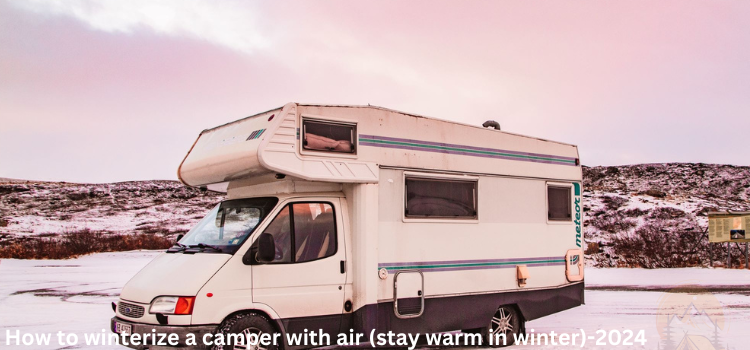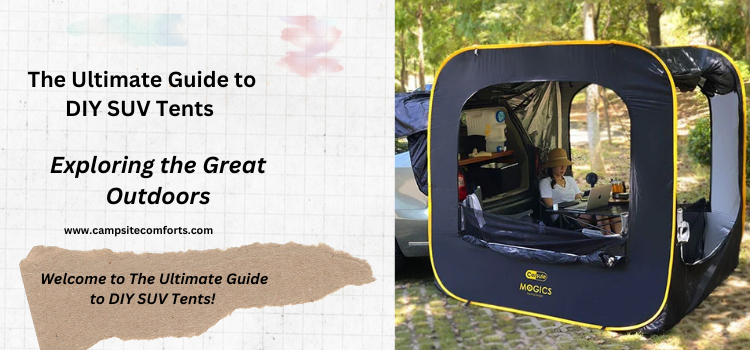As the chilly winter months approach, it’s time to start thinking about protecting your enjoyed camper from the harsh elements. Winterization is key to ensuring that your beloved home on wheels stays in top notch condition throughout the cold season. And what better way to do it than by using air?
In this blog post, we’ll guide you through the process of how to winterize a camper with air, providing you with all the necessary steps and tips for a easy changeover into winter storage.
So, whether you’re an experienced RV or a newbie adventurer, get ready to learn how to properly prepare and safeguard your camper against freezing temperatures. With our step-by-step instructions and expert advice, you’ll be well-equipped to tackle this essential task like a seasoned pro. Let’s dive in and discover why winterization is so important for every camper owner out there.

The Importance of Winterization a camper with air:
Winterization is an important step in maintaining your camper’s longevity and ensuring it remains in top-notch condition. As the cold winter months approach, it’s essential to protect your investment from potential damage caused by freezing temperatures.
One of the primary reasons for winterizing your camper is to prevent water systems from freezing. When water freezes, it expands and can cause pipes, taps, and tanks to crack or burst. Repairing these damages can be both costly and time-consuming.
Moreover, winterizing RV water lines helps safeguard against mold and mildew growth. Moisture trapped inside the camper during the colder months creates an ideal breeding ground for these unwanted guests. By properly preparing your camper for winter, you can minimize the risk of such problems when spring arrives.
By recognizing the importance of winterization for your camper, you’re taking proactive steps towards protecting its value and ensuring many more seasons of adventure-filled camping experiences ahead.
Benefit to how of winterize a camper with air:
When it comes to winterizing your camper, there are several methods you can use. One of the most efficient and effective ways is to winterize with air. There are many benefits to using this method that make it worth considering.
Winterizing with air allows for a thorough removal of water from your camper’s plumbing system. By blowing compressed air through the lines, you can ensure that all water is removed, preventing any potential freezing and after damage.
This method eliminates the need for antifreeze in your plumbing system. While antifreeze can be effective in preventing freezing, it does require flushing out before using your camper again in the spring. With air-winterization, there is no need for this extra step.
Additionally, by winterizing with air instead of antifreeze, you avoid any potential health or environmental risks associated with handling and disposing of chemicals.
Furthermore, utilizing an air compressor gives you greater control over the process and allows you to target specific areas where water may be trapped or prone to freezing.
Step-by-Step Guide to Winterizing with Air:
Winterizing your camper with air is an important step to protect it during the colder months. By following these simple steps, you can ensure that your camper remains in top condition and ready for use when spring arrives.
Preparing Your Camper:
Before starting the winterization process, clean and remove any food items from your camper. This will prevent insects from being attracted to your vehicle during storage.
Draining Water Systems:
Begin by draining all water tanks, including freshwater, gray water, and black water tanks. Open all taps and drains to allow any remaining water to flow out completely.
Adding Antifreeze:
Next, add antifreeze to the plumbing system using an air compressor or hand pump connected through the city water inlet. This will ensure that any residual moisture doesn’t freeze and cause damage.
Protecting Exterior and Interior Features:
Take measures to protect both the outside and inside of your camper from cold weather elements such as snow, ice, and freezing temperatures. Cover exterior vents with insulated covers or foam insulation tape, seal windows with plastic wrap or insulation film, and place moisture-absorbing products inside cabinets to prevent mold growth.
Securing the Camper for Storage:
Make sure your camper is secure for storage by checking tire pressure levels (inflate if necessary), disconnecting batteries or maintaining them with a charger if needed, covering tires with protective covers or blocks against flat spots while stationary for extended periods of time.
Best way of using a winterize a camper with air:
By following these steps and taking proper precautions, you’ll be able to effectively winterize your camper using air keeping everything safe while you enjoy cozy adventures throughout even the coldest of seasons.
When it comes to winterizing your camper with air, there are a few key steps you should follow. First, start by draining all the water from your plumbing system. This includes emptying the fresh water tank and opening all taps and drains to release any remaining water. You can use compressed air to blow out the lines, ensuring no moisture is left behind.
Next, it’s important to protect your pipes from freezing temperatures. Insulate exposed pipes with foam pipe insulation or heat tape. This will help prevent them from bursting during those icy nights on the road.
Don’t forget about your hot water heater. Make sure to drain and bypass it before blowing out the lines with air. This will help avoid any potential damage caused by freezing water inside.
Another important step in winterizing with air is properly sealing off any openings or gaps in your camper. Use weatherstripping or caulk to seal windows, doors, vents, and other areas where cold air might seep in.
Remember to remove all food items from your refrigerator and thoroughly clean it out before storing for the winter months. Leave the fridge door slightly to allow for ventilation and prevent mold growth.
Tips and Tricks for Successful Winterization:
By following these tips and tricks for successful winterization with air, you’ll have peace of mind knowing that come springtime, your trusty camper will be ready for new adventures without any costly surprises along the way.
When it comes to winterizing your camper with air, there are a few key tips and tricks that can make all the difference in ensuring a successful outcome. First and foremost, it’s essential to start this process well in advance of freezing temperatures.
Begin by draining all water from your plumbing system, including tanks, pipes, and taps. This will prevent any residual water from freezing and causing damage. Next, use compressed air to blow out the remaining moisture from your lines. Pay special attention to low points in your plumbing system where stagnant water builds up.
To protect your camper’s appliances during winter storage, remove any batteries and store them separately in a dry location. Clean out refrigerators/freezers thoroughly and leave their doors slightly open to prevent mold or odors from developing.
Don’t forget about exterior maintenance. Give your camper a thorough wash before storing it away for the winter months. Apply an appropriate RV wax or protective coating to preserve its finish against harsh weather conditions.
Common Mistakes to avoid when of how to winterize a camper with air:
By avoiding these common mistakes and taking proper precautions, you can enjoy peace of mind knowing that your camper will remain protected during those chilly winter months ahead.
Mistakes can happen, but when it comes to winterizing your camper with air, there are a few common ones you’ll want to avoid. First and foremost, failing to properly drain the water from your plumbing system can lead to serious issues down the road. Make sure that all taps, showerheads, and toilets are emptied completely before beginning the winterization process.
Another mistake is overlooking the importance of adding antifreeze to your lines. Simply blowing out the water with compressed air may not be enough to prevent freezing and potential damage. A combination of air and antifreeze is key for ensuring that no residual water remains in your pipes.
Additionally, many people forget about their hot water heater during winterization. It’s important to drain and bypass this system as well in order to prevent any freeze related problems.
Some campers make the mistake of rushing through the process or skipping steps altogether. Take your time and follow each step carefully in order to ensure a thorough winterization work.
Conclusion:
how to winterize a camper with air is a simple and effective way to protect it from the harsh winter weather. By following mentioned above all these steps, you can ensure that your camper stays in top condition during the colder months. Remember to properly drain all water systems and use antifreeze to prevent any potential damage. Taking the extra time and effort now will save you from costly repairs or replacements in the future. So don’t hesitate, start preparing your camper for winter today.
FAQS:
How much air pressure do I need to winterize my RV?
Aim for a maximum air pressure of 50 psi when using an air compressor, and set it at 30 psi. Also, when using an air compressor, go around your trailer and open each water valve individually.
Where can I put air in my RV tires?
Adding air to your RV tires is easy with an air compressor or other portable air pump. You may inflate your tires outside of campgrounds and gas stations using a portable air pump. A lot of pumps are compact enough to fit in the storage hatch of your travel trailer or RV.
Where can I find tire pressure?
The appropriate tire pressure for your car is usually listed on a placard located inside the driver’s door. According to Cars.com, the owner’s manual typically lists it as well. Pounds per square inch (psi) is the unit used to measure tire pressure. It’s possible that you’ve noticed a tire pressure listed on the tire sidewall.






